During my stay at a family farm in the Limousin, I was able to take advantage of a few moments of picking and processing to begin to discover medicinal and aromatic plants and their different uses. Marie and Paul cultivate on twenty beds, around fifty mainly aromatic plants. In addition, there is a multitude of wild plants that grow on the land which enrich the production.
Aromatic and medicinal
The “simple” is the name given by French people since ancient times to plants with medicinal properties. The practice of herbalism being prohibited in France, the exploitation and sale of medicinal plants is quite complicated for small producers like Marie and Paul. No mentions relating to health or to the use of plants as medicinal treatment should be mentioned on the products sold. And plants cannot be sold as medicine. And this despite the growing demand from the general public to treat themselves with plants for mild infections that seems to be making a comeback since a few years.
It is to avoid these problems that the farm has decided to concentrate its production on aromatic plants rather than medicinal ones. And to concentrate their sale on herbal teas, salt with herbs, pestos, jellies and syrups. But many aromatic plants benefit from medicinal properties and vice versa. Taste and medicinal properties are therefore mixed in the products sold.
Thyme, verbena, basil, mint, peppermint, chamomile, sage, calendula, mallow, borage, lemon balm, marshmallow, lime blossom, wild thyme, elderberry, helichrysum, marjoram, rosemary, hyssop, yarrow, nettle, lavender … A mixture of plants from environments with different climates share the garden. Depending on their orientation, location and soil, plants grow despite identical weather conditions. Plants in a Mediterranean climate have a soil covered with pebbles and little water while plants in a more temperate climate benefit from water runoff, mulch and shade.
At the start of Autumn, the garden is no longer very flourishing but pretty patches of color are still emerging thanks to the blue flowers of the borage, the orange ones of the calendula and the superb purple flowers of the mauve.
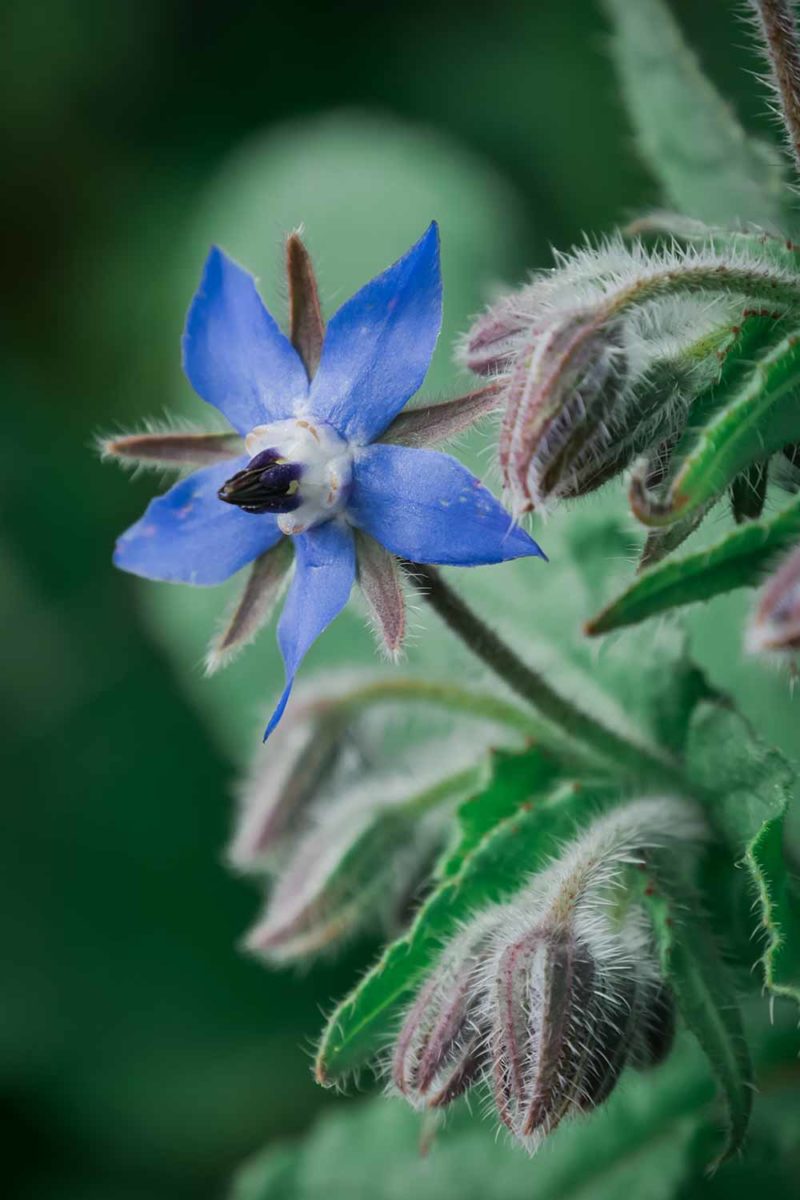
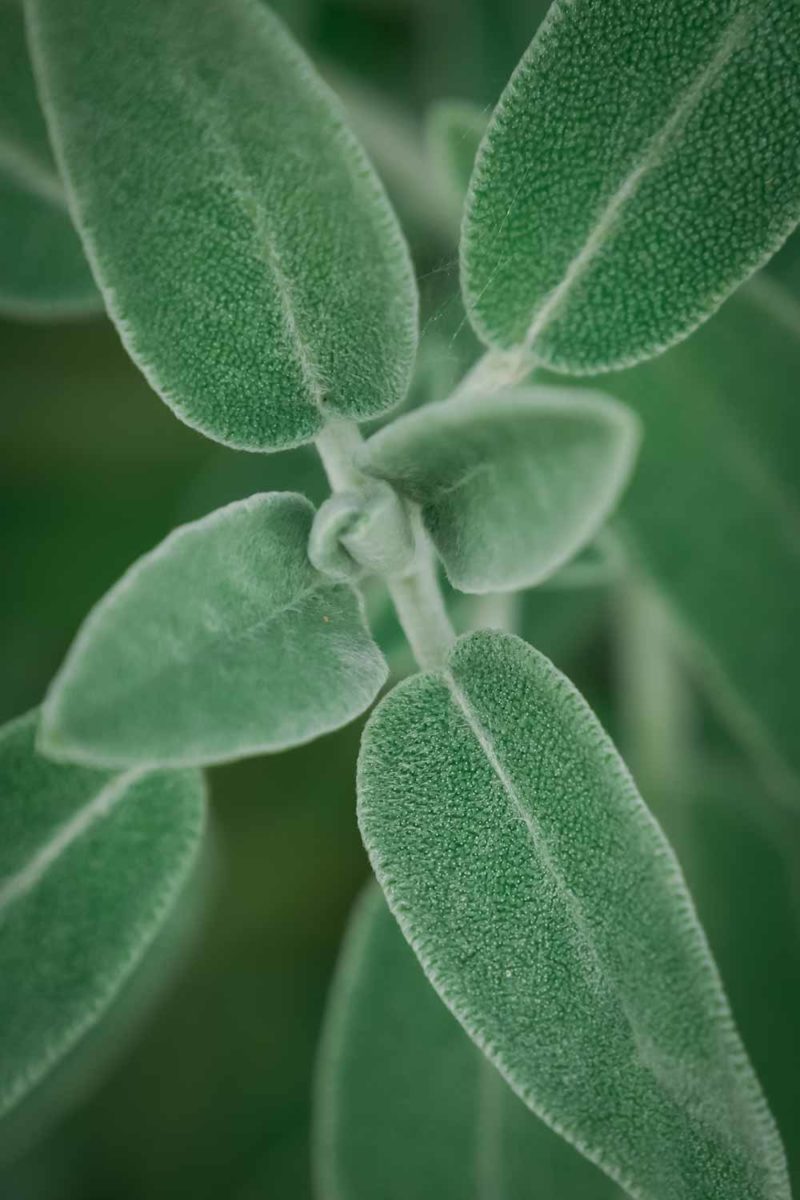
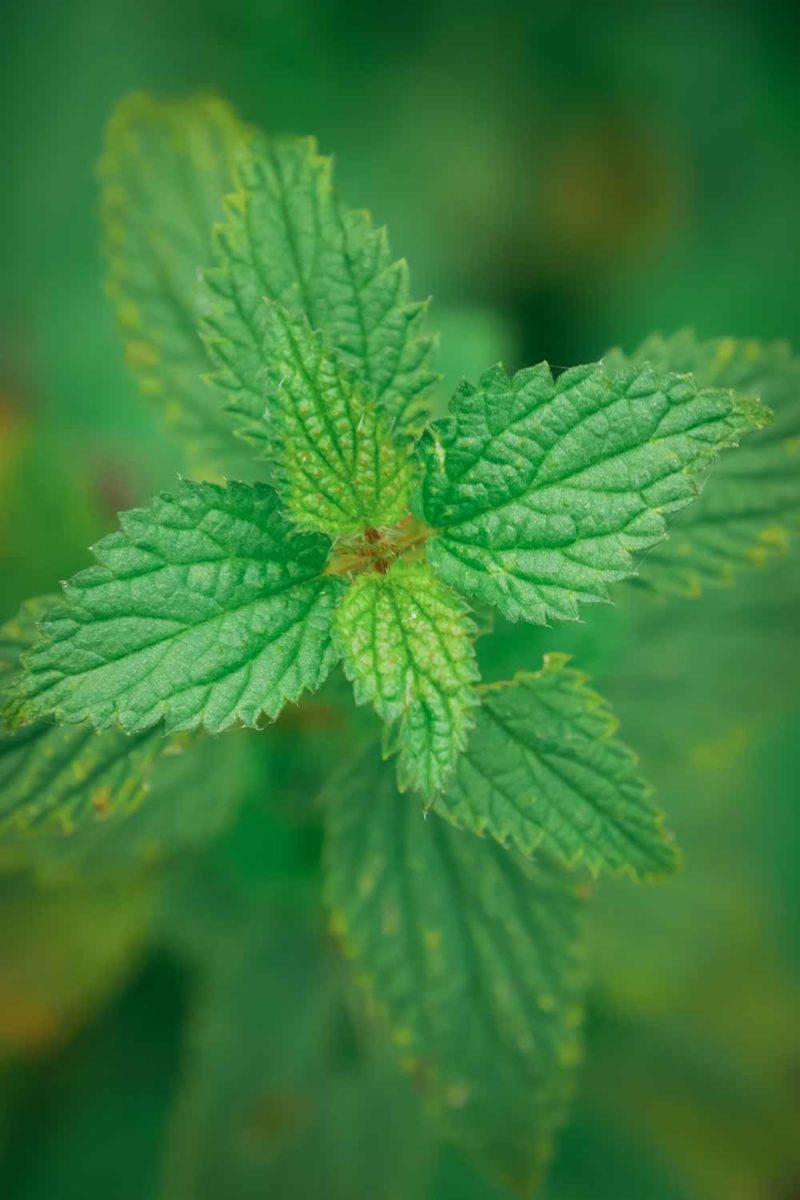
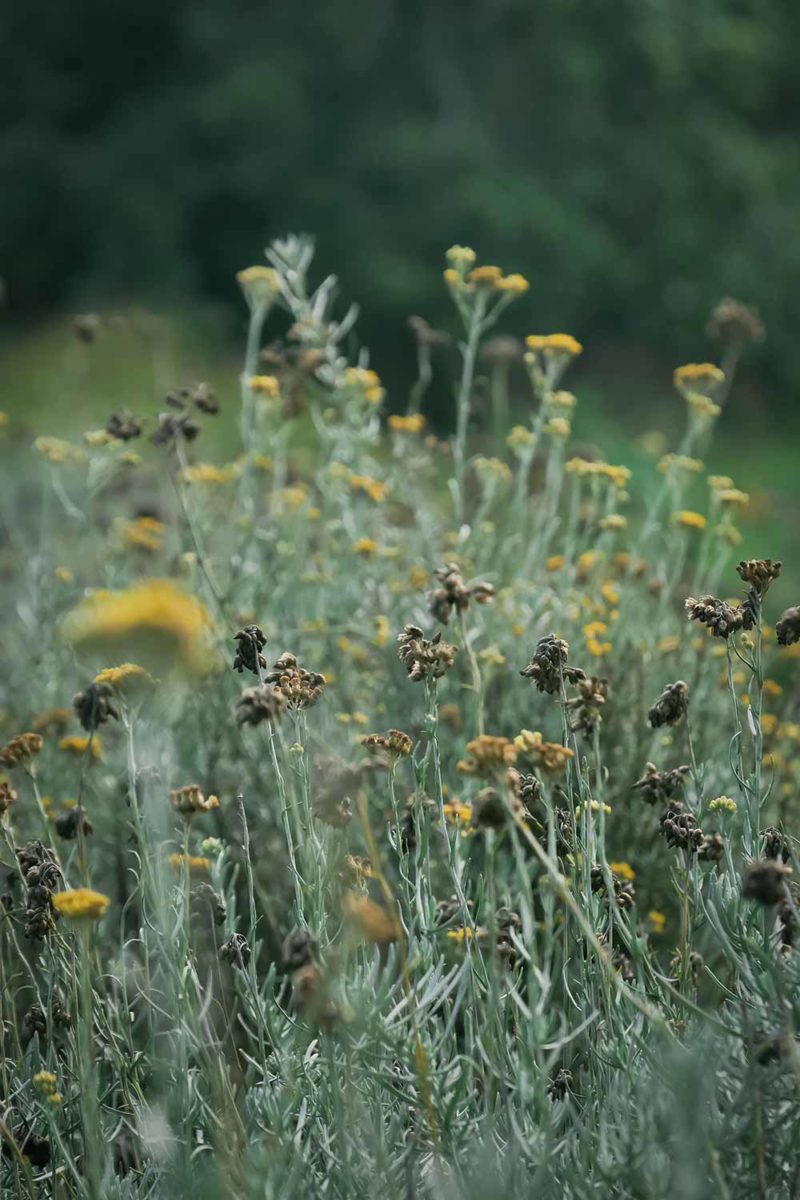
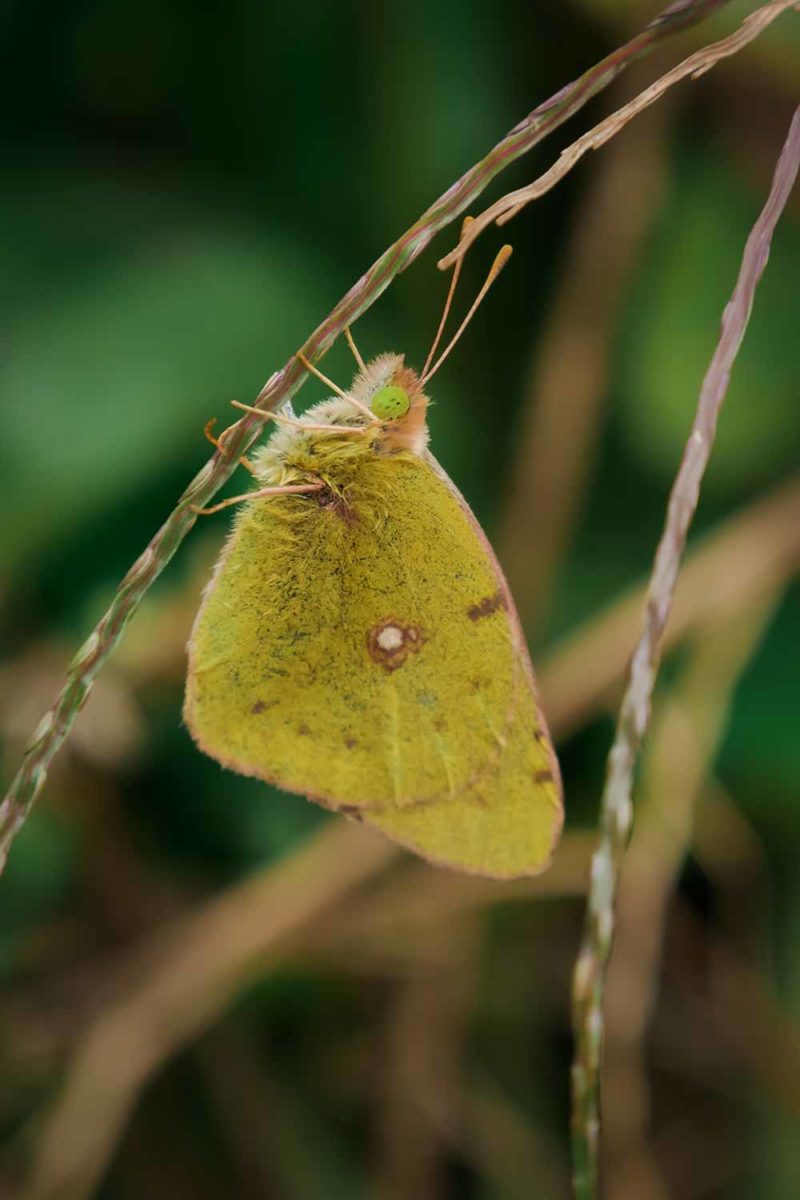

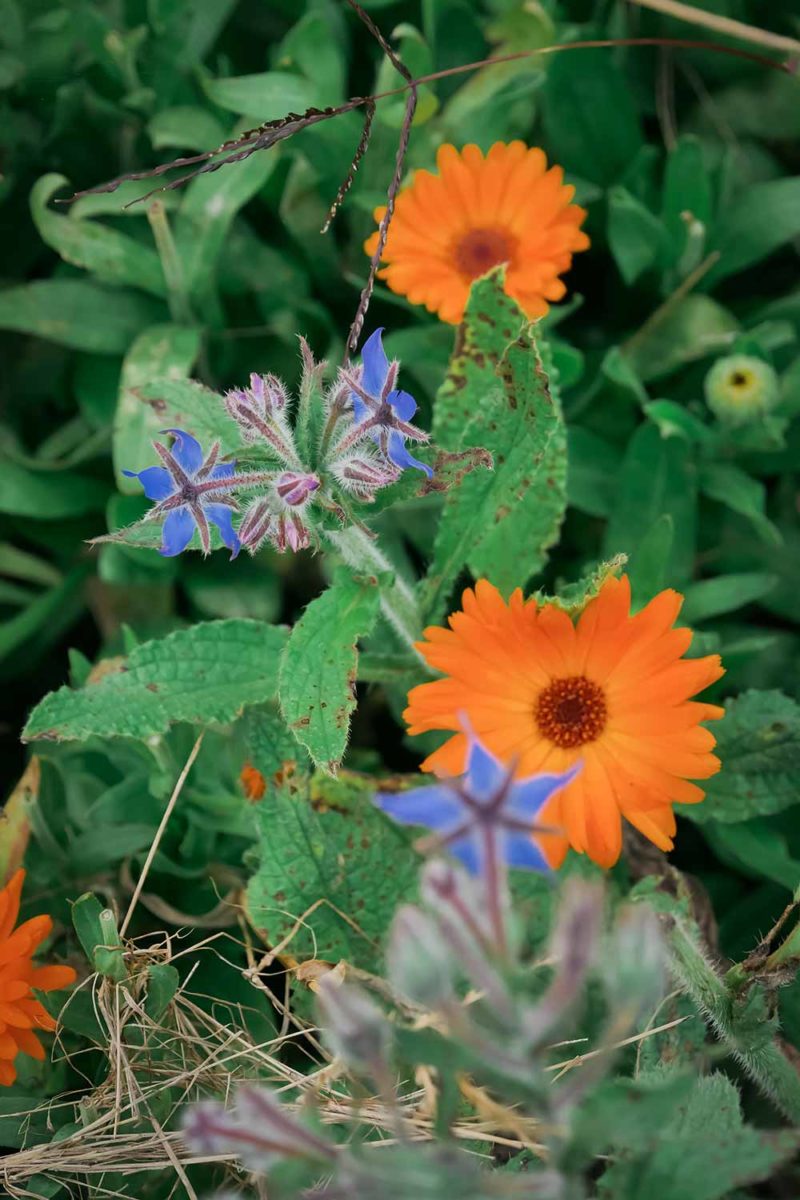
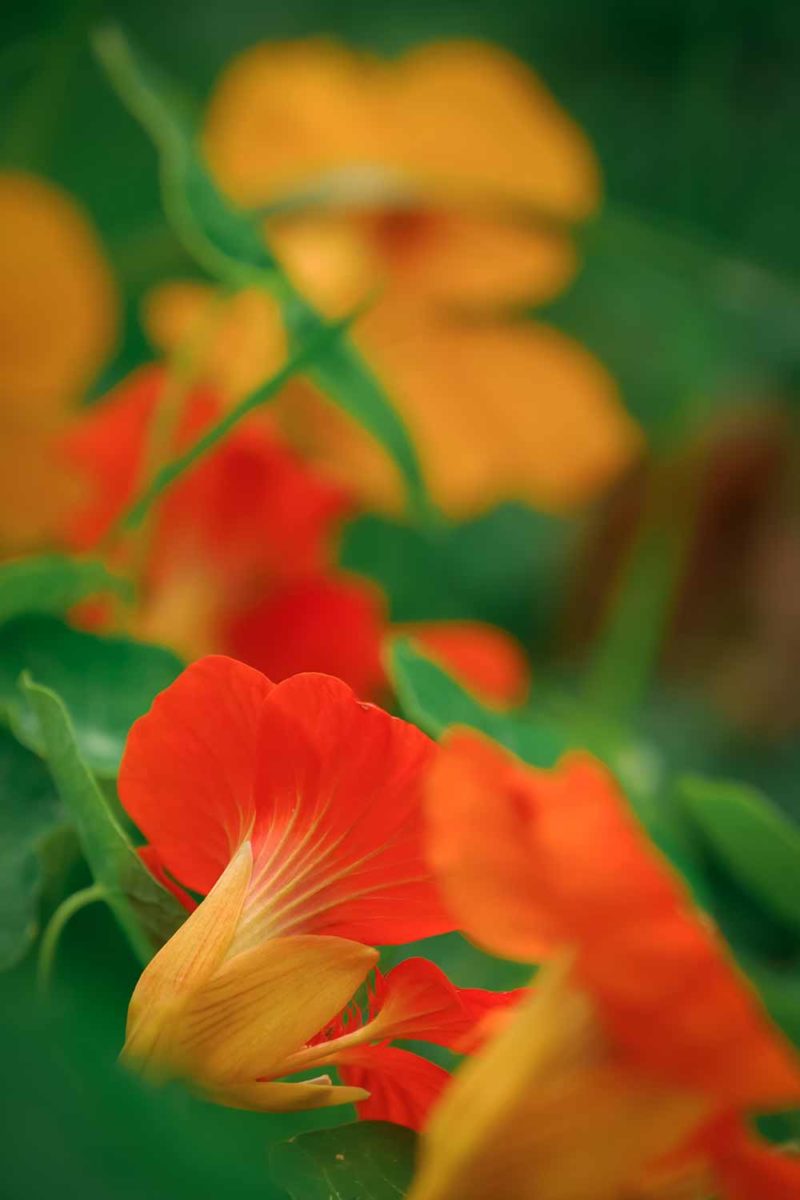

In order: borage, sage, nettle, helichrysum, a Colias croceus (butterfly), lemon balm, calendula with borage and tropaeolum majus.
Transformation into herbal tea
One of the main transformations carried out at the farm consists of preparing herbal teas. Preparing herbal tea is a relatively simple activity to perform. The first step is to collect the flowers or leaves of the plants ready to be picked. All plants do not flower at the same time during the year, which allows the harvests to be spread out. During my stay we mainly picked flowers of borage, calendula, mallow, yarrow and peppermint. Harvesting is very simple and consists of delicately picking the flower or leaf by hand or with a chisel.
To pick the flowers of a plant is to remove the seeds necessary for its survival. This is why plants from which the flowers have been cut will in a few days reproduce new flowers in order to ensure their progeny. This means that the harvest is not usually done over a day but can be spread over time depending on the flowering.
The picked plants are then put to dry in the storage room, insulated with hemp wool and cork sheets and electrically ventilated. Insulation is essential in a storage room, since the temperature must remain as stable as possible with minimal humidity throughout the year. The flowers and / or leaves are spread upside down on racks and put to dry in a sort of rack cabinet. The drying time can vary from one to four days depending on the plant.
Once the plants are dry they are stored in a large kraft paper bag. The best way to store dried plants is to store them in an airtight, opaque glass jar. Under these conditions the storage can reach up to two years. But storage in glass jars is not practical for Marie’s use of it, with a lot of handling.
The herbal teas are then prepared by mixing different plants and pouring 25g of the mixture into each sachet which is then closed and labeled. Marie makes her own mixtures using experiments and taste associations.
My stay on the farm allowed me to discover the beginnings of the cultivation and transformation of aromatic and medicinal plants. But the approach remained a little too superficial with relatively little discussion on the specificities of plants, their way of growing them, the value of wild picking, other types of possible transformations or their own medicinal properties. While growing plants for sale as herbal tea, jelly and syrup production is interesting, I am also very drawn to the concrete medicinal applications of each plant and what they can teach us about our surroundings.
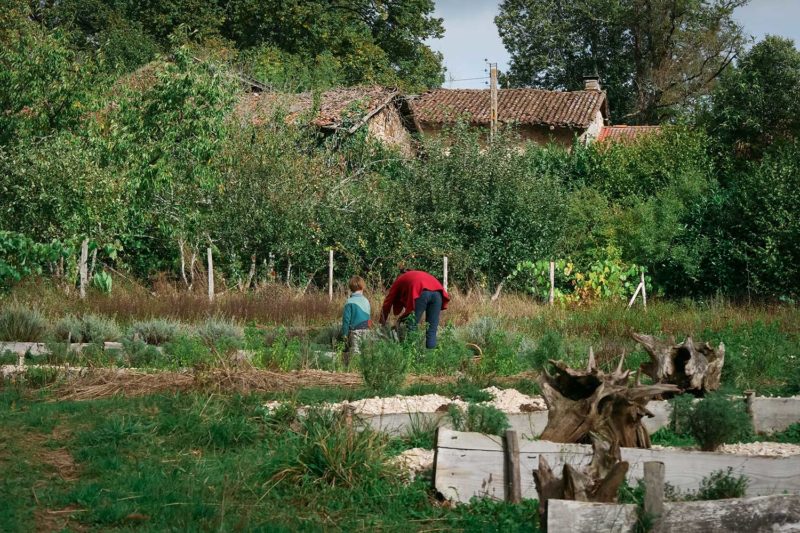
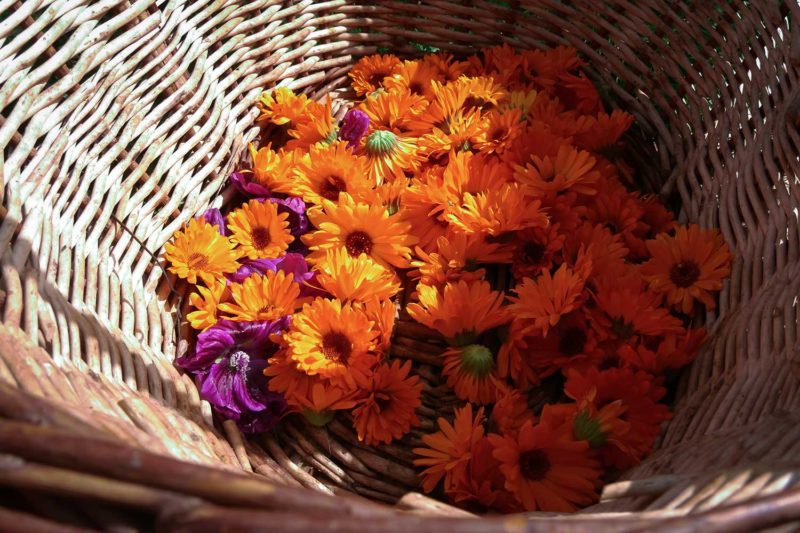
Family picking of calendula (orange) and mallow (violet) flowers.
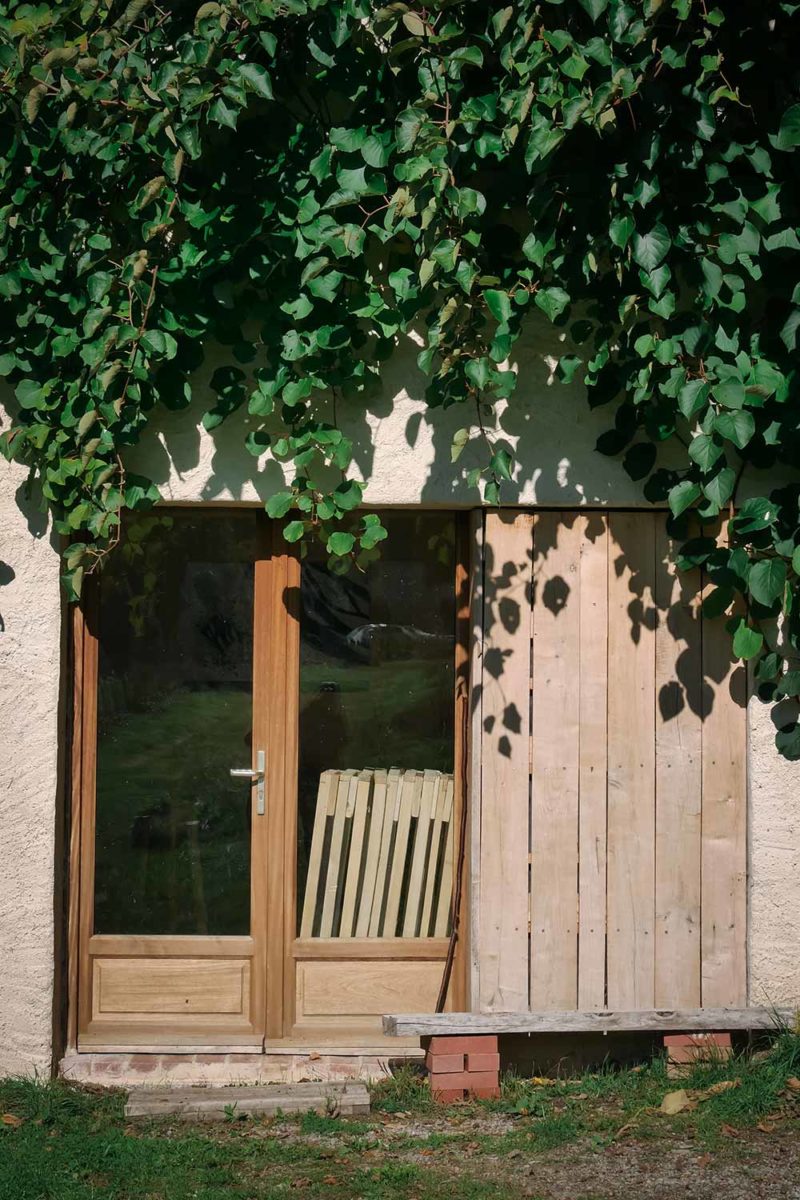
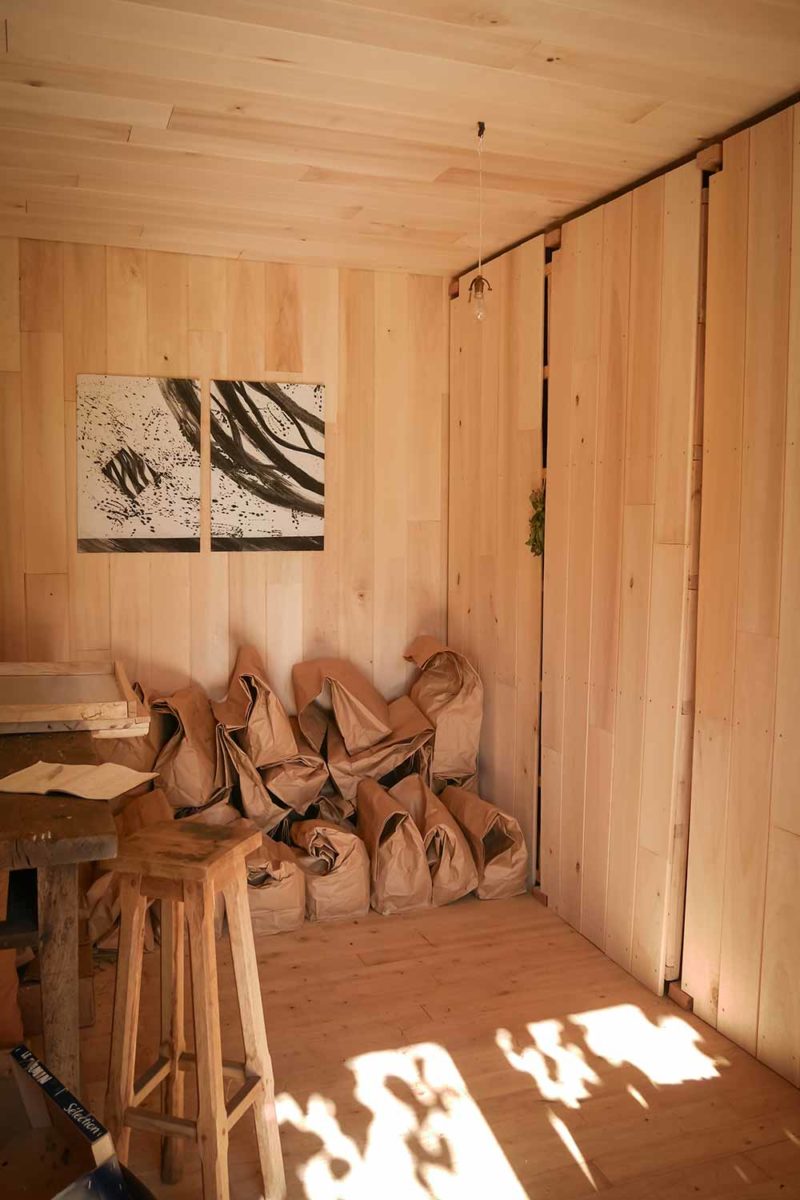
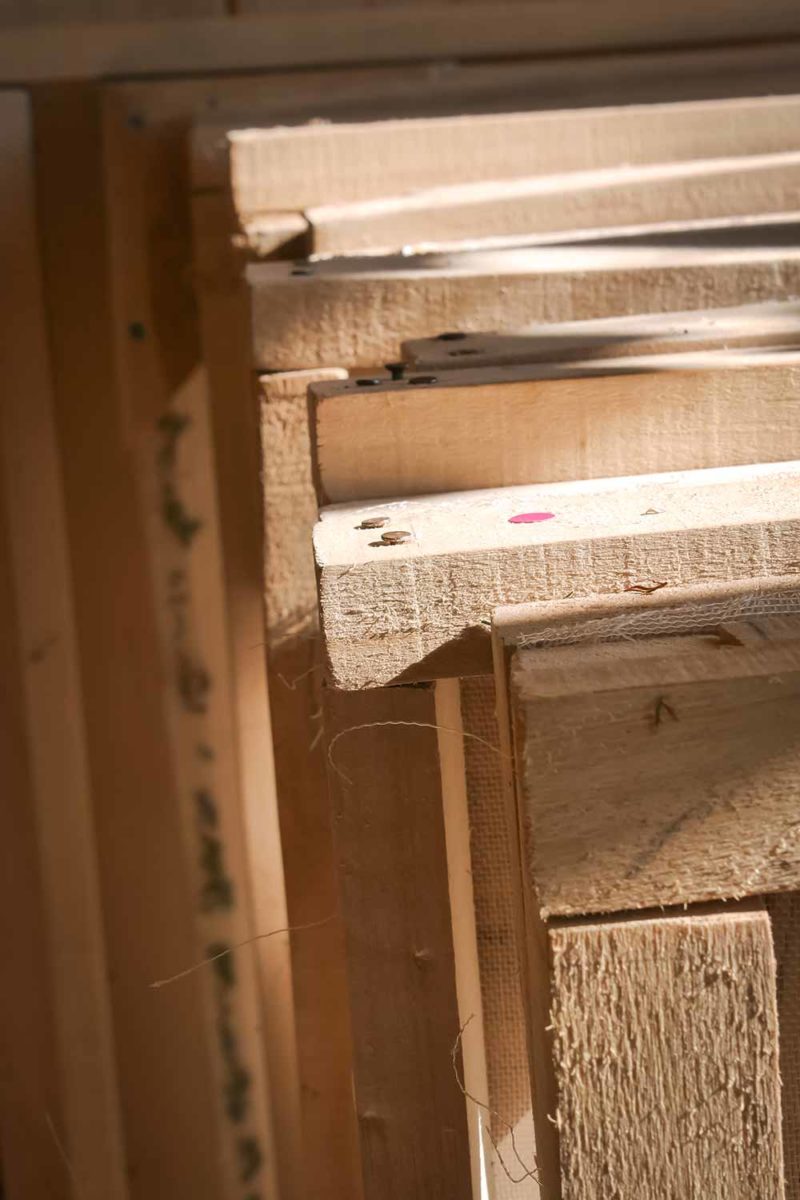
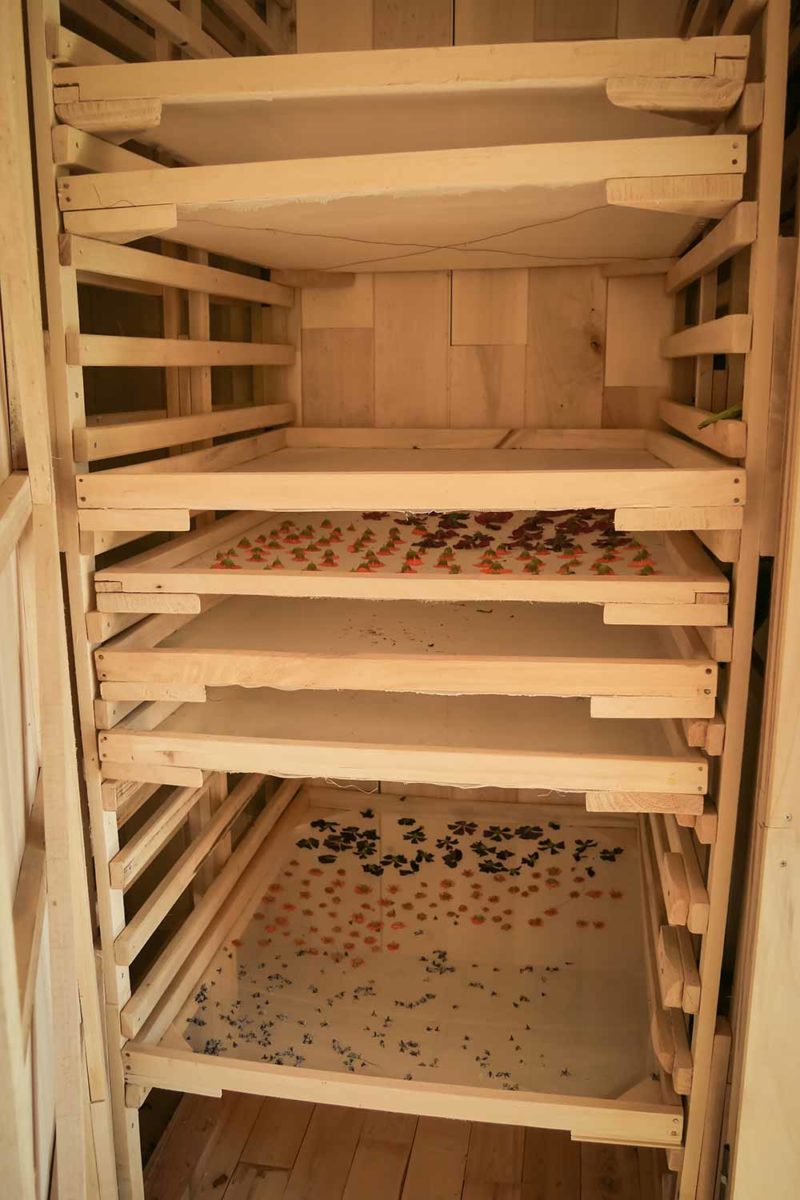
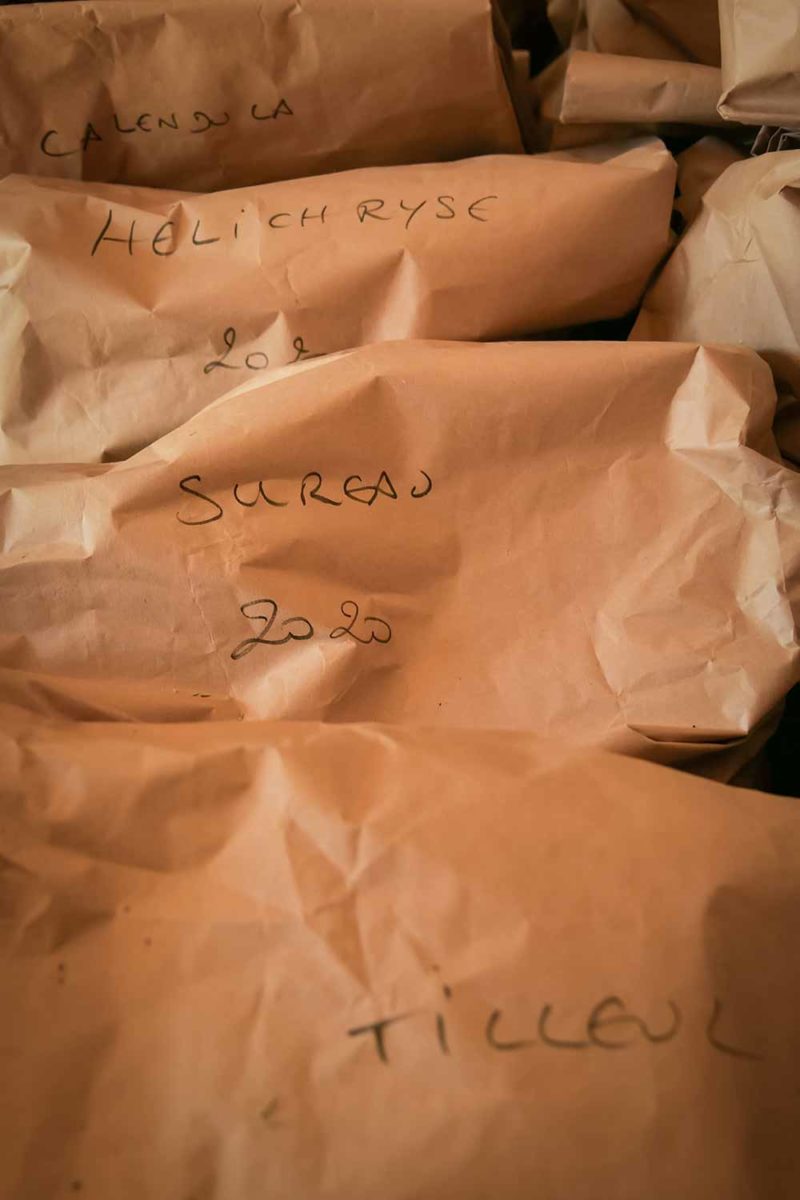
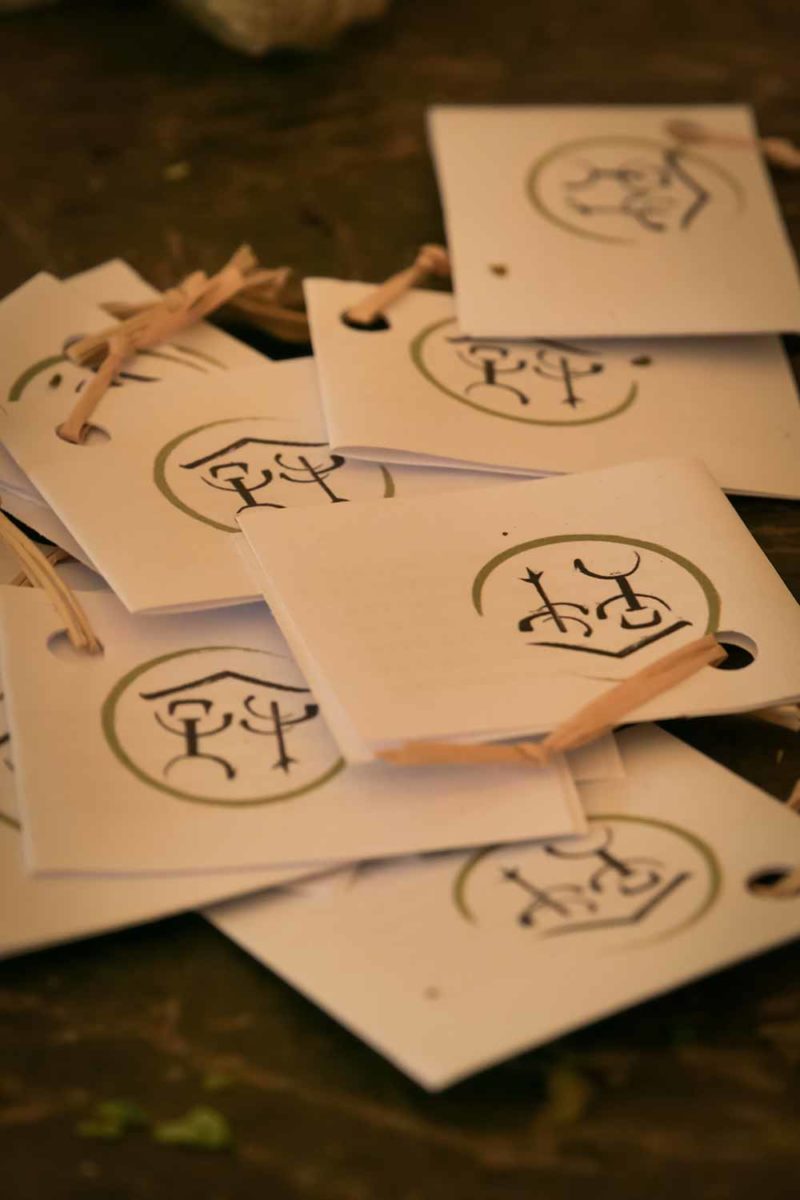
The drying room with the rack, storage bags and small labels with the farm logo.
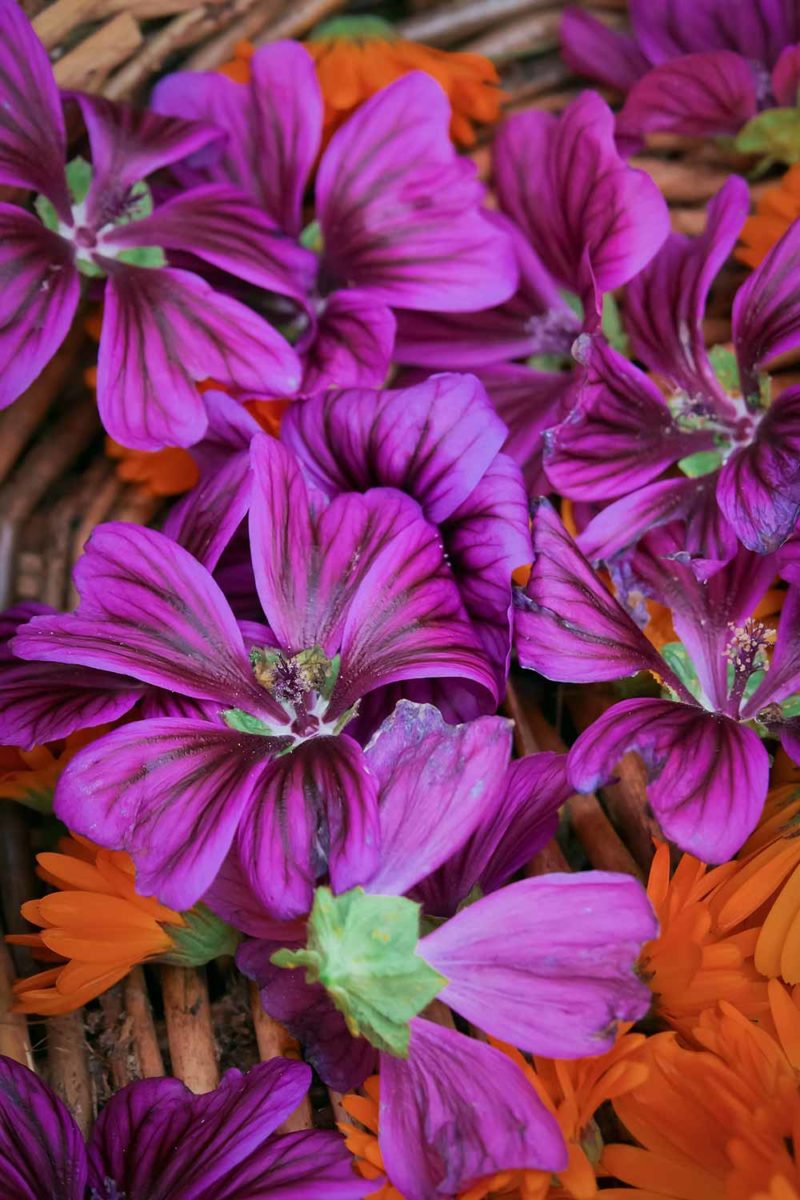
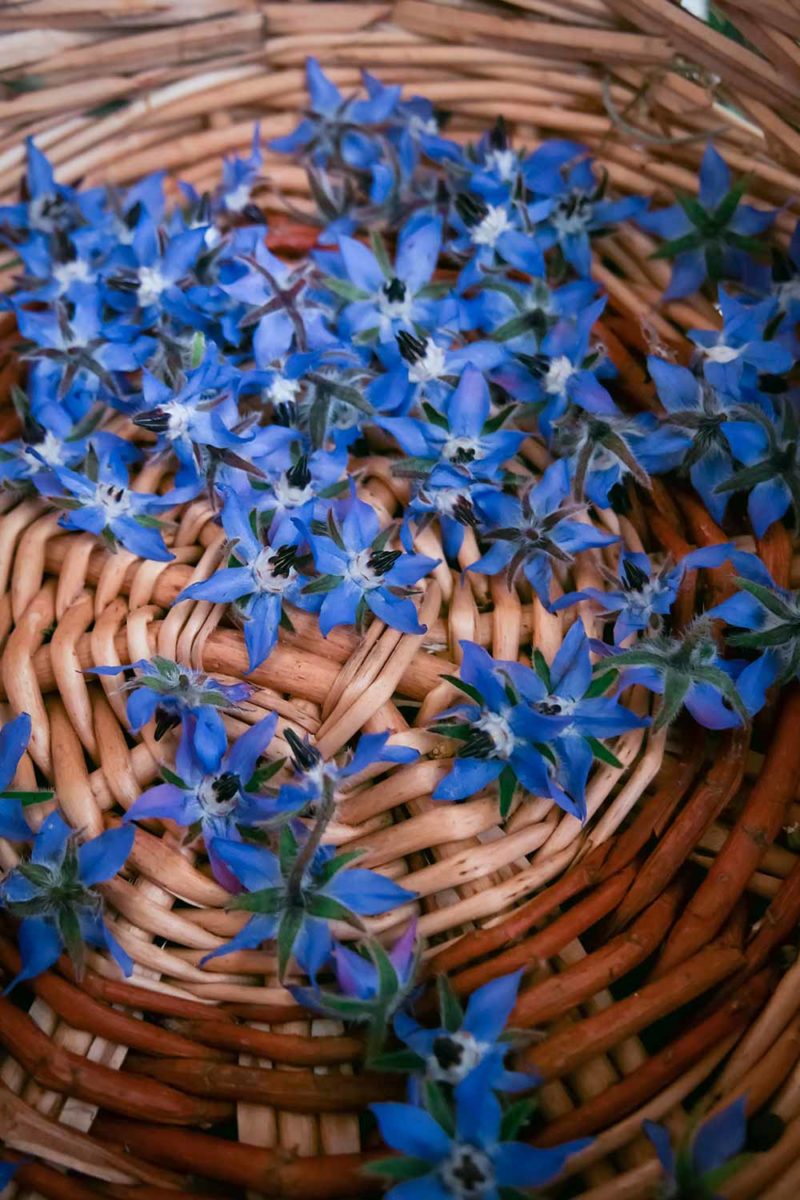
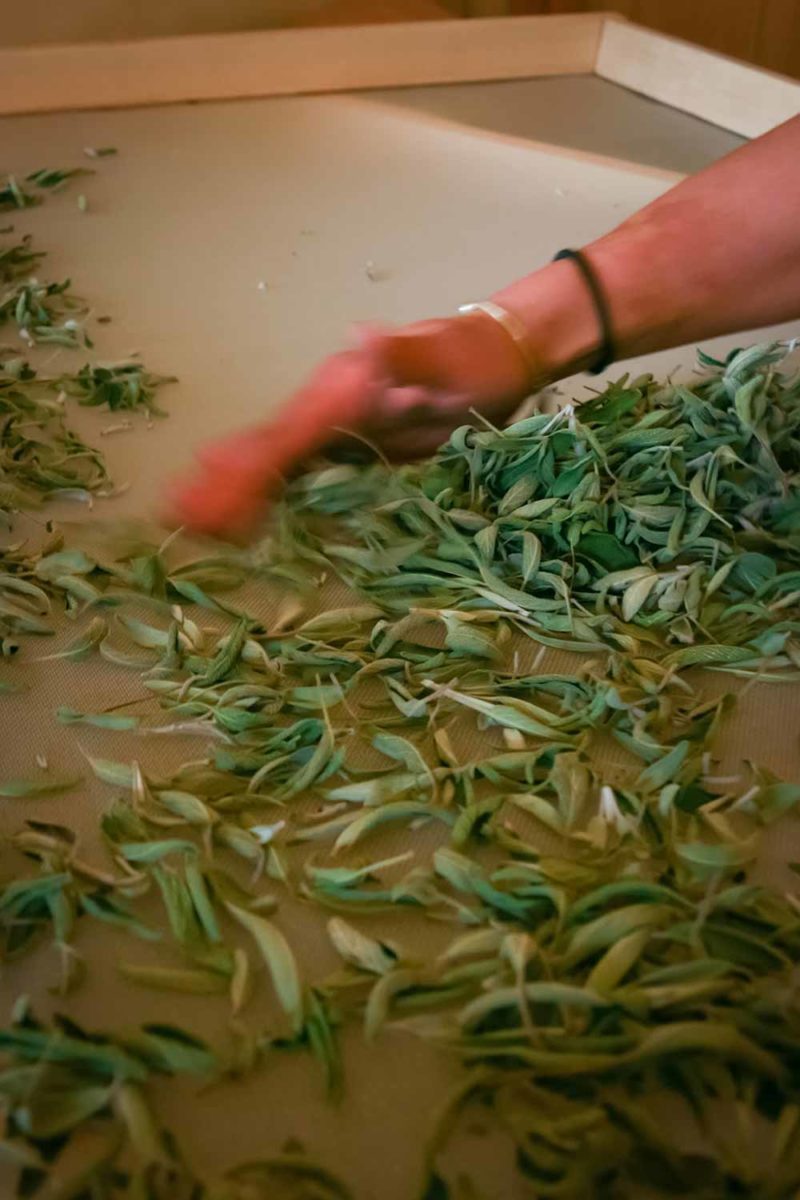
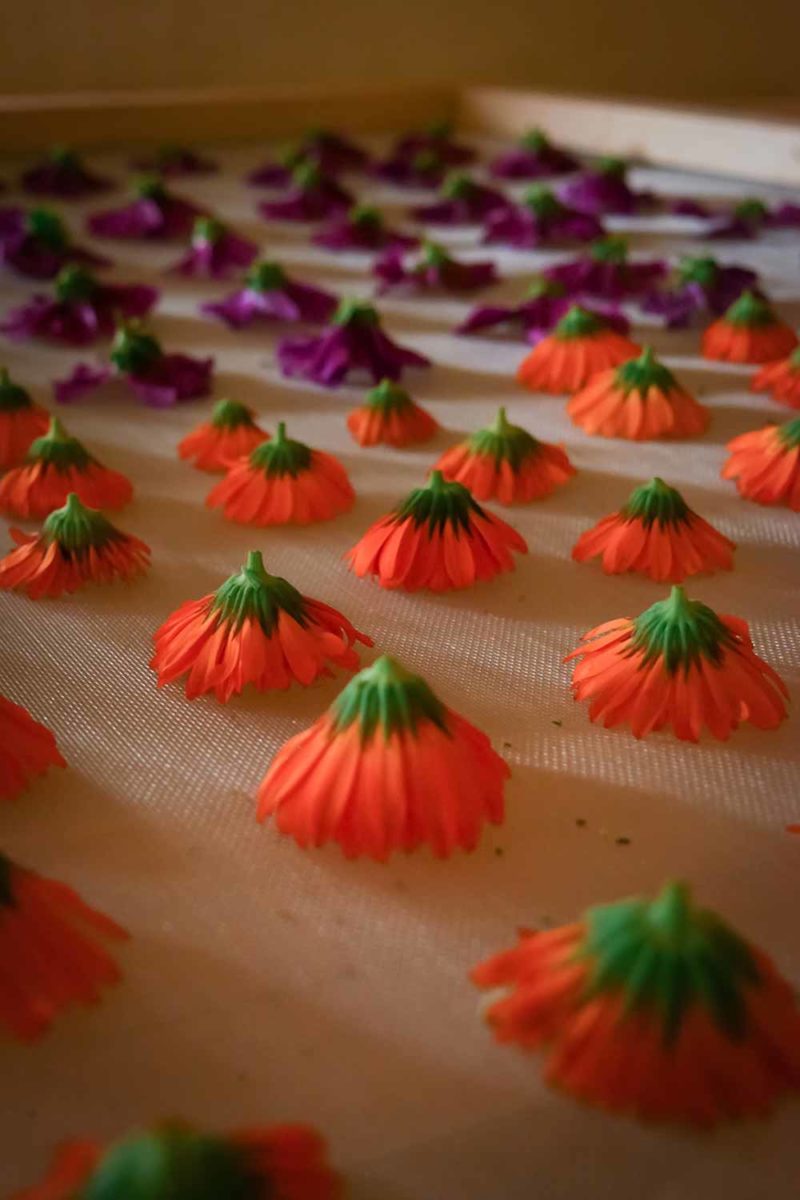
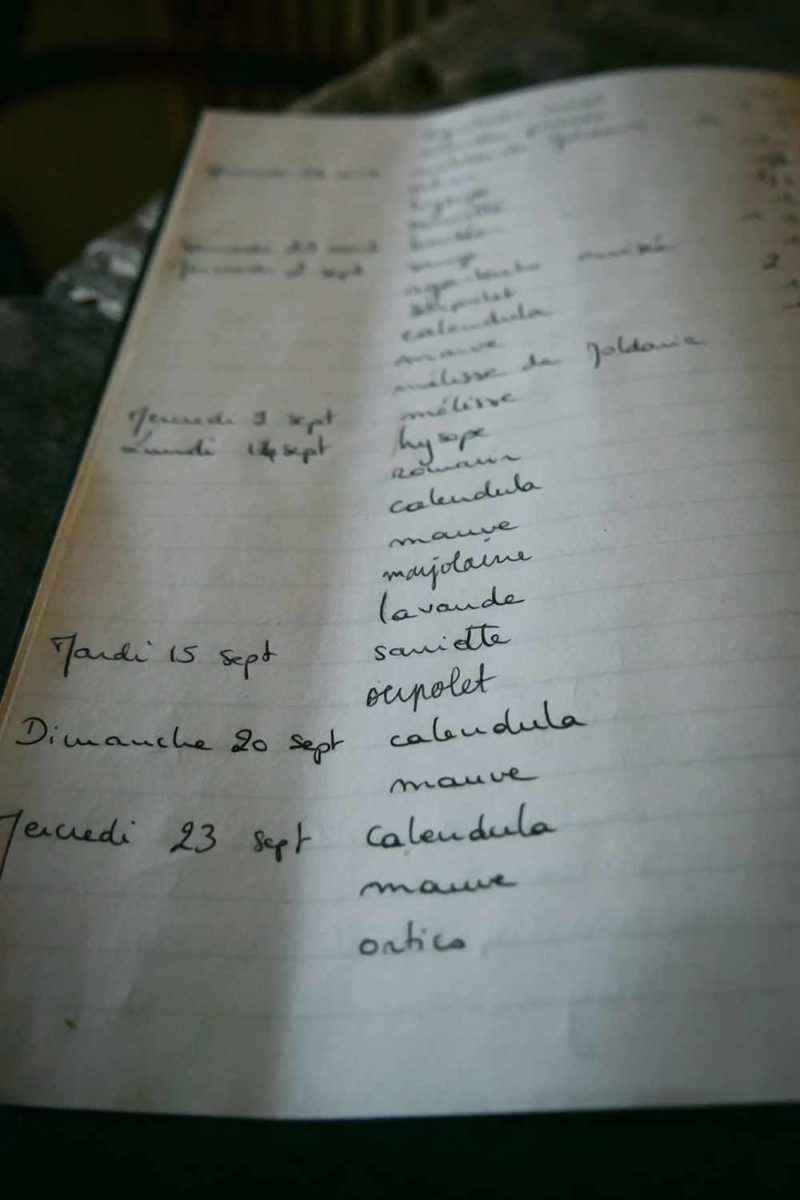
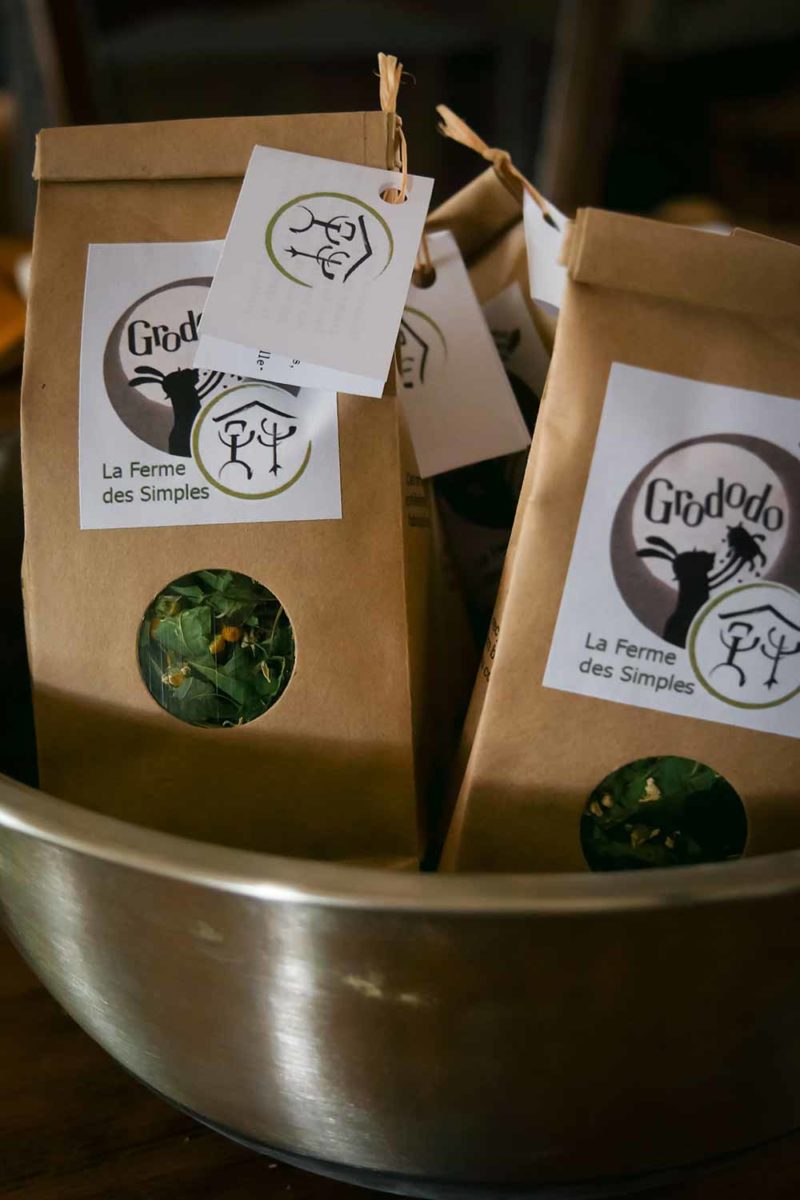
Drying of the flowers with monitoring of the quantities collected. Bottom right, the “Grododo” herbal tea, one of the herbal teas sold by the farm.
Note: In order to respect the right to privacy and anonymity on the internet, the names of people have been changed.
